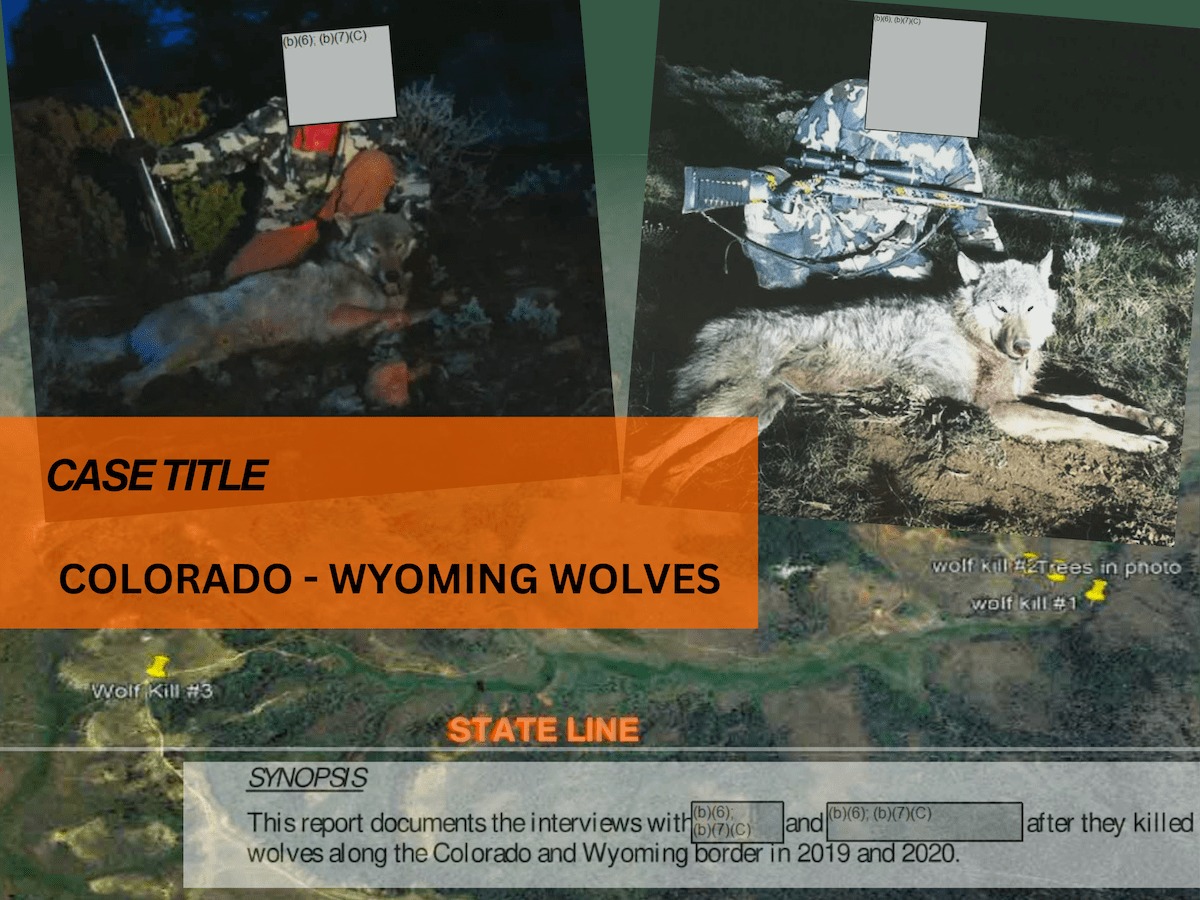
An electronic call drew the canine in.
The recorded sounds of a pronghorn in distress blared from a point some 600 yards north of the Colorado-Wyoming state line. It was a Saturday in May 2019, and the hunters at first thought they were looking at a coyote.
Then the animal emerged further from the brush. They saw it had a “swooped down tail” and an “oversized head.”
The men playing the distress call knew what this was.
Wolf.
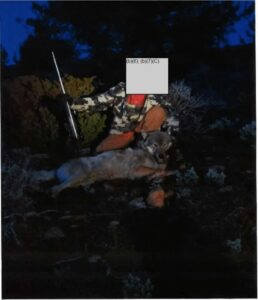
When the gray lobo came within 243 yards, a rifle erupted. The shot from the 7 mm Shooting Times Westerner killed the lone male, a member of the first wolf pack documented in the state of Colorado since the 1940s.
“It was no mistaken shooting,” the shooter told WyoFile. “We knew what it was. And when we saw it, we wanted it.”
The following year three more wolves were shot and killed in Wyoming within two miles of the state line, where the pack set up a home range straddling Moffat and Sweetwater counties. One hunter killed an interstate wolf from that founding pack mere feet from the gate separating the two states.
The trend continued in north-central Colorado, after the second modern-day wolf pack in the Centennial State was documented: At least four wolves from the North Park Pack would die at the hands of hunters after straying north across the state line. In the wake of the predictable public acrimony, Wyoming officials have shut down communications about wolf killings, citing state statute.
Now, all eyes are on Colorado’s impending wolf reintroduction: a voter-initiated biological intervention that will import animals from Oregon before the end of the year. But until now, the details of the killings, which help explain why wolves have not naturally taken hold in Colorado, have not been made public.
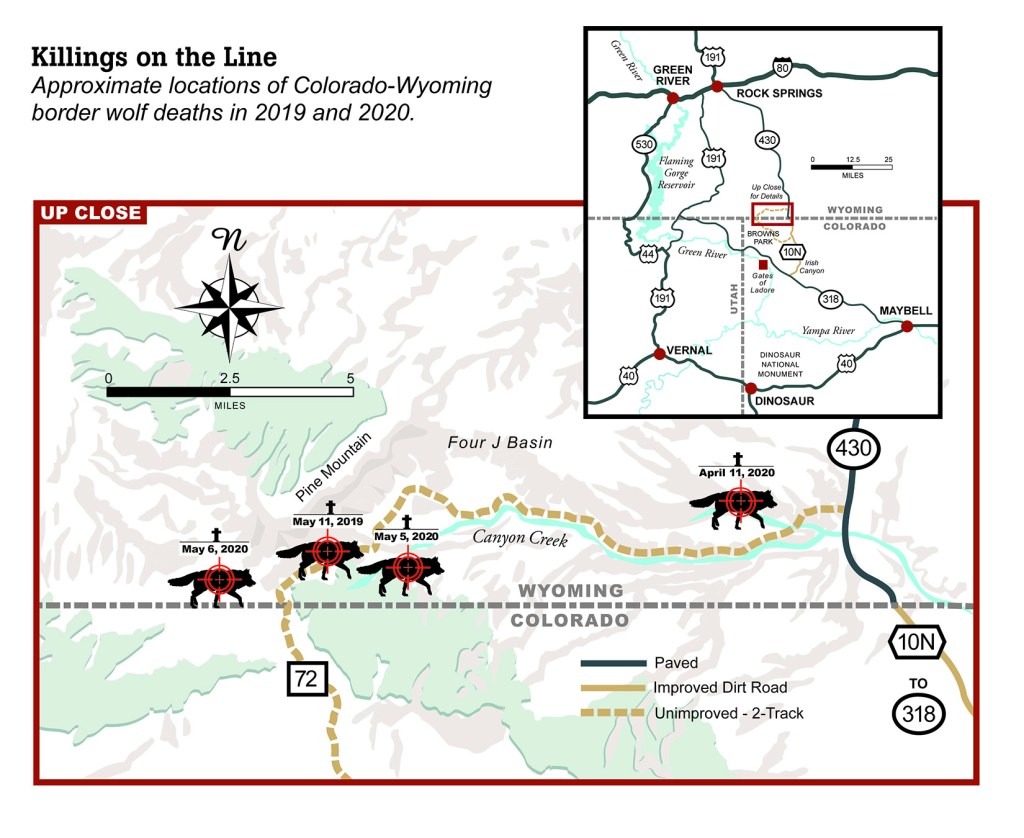
WyoFile acquired documents tied to the killings of three wolves from Colorado’s first modern-day wolf pack through a Freedom of Information Act request that netted U.S. Fish and Wildlife Service law enforcement investigation reports. Through those partly redacted reports WyoFile was able to contact one man, a hunting outfitter, who pulled the trigger on the first wolf and was present when another hunter — his son — shot and killed two others. The man would only be interviewed on the condition of anonymity, fearful he’d be harassed and threatened for speaking publicly about the wolf killings. WyoFile granted that request, believing his account would provide a perspective that our readers couldn’t access otherwise; knowing that he is a private citizen who, according to the federal investigation, has committed no crimes and has no obligation to talk; and recognizing that his fear of harassment is not unwarranted.
Paper trail
On that day in May 2019, the northwest Colorado resident was actually hunting black bear, he said. Baiting bears is legal in Wyoming, but not Colorado, so the outfitter had for years chosen to hunt north of the state line in Sweetwater County. The man knew that it was legal to kill any wolf, at any time, by any method without license, tag or permission in that reach of far southern Wyoming.
By killing one lobo, the man learned firsthand that wolves were in the area nine months before Colorado Parks and Wildlife announced — citing DNA evidence from scat — that a wolf pack had traveled into Moffat County. It was the first wolf pack confirmed in Colorado in over 80 years, the state agency declared in a press release. It’s unknown where the pack came from.
Colorado Parks and Wildlife officials, who did not respond to an interview request for this story, reminded the public in that 2020 press release that wolves are protected by the Endangered Species Act in the state. Killing one, the agency noted, can result in a $100,000 fine and a year in prison. One state to the north, the situation is much different. Although wolves are managed as “trophy game” and subject to rules and regulations in far northwestern Wyoming, the remainder of the state is part of the so-called “predator zone.” There, no license is necessary and virtually anything goes.
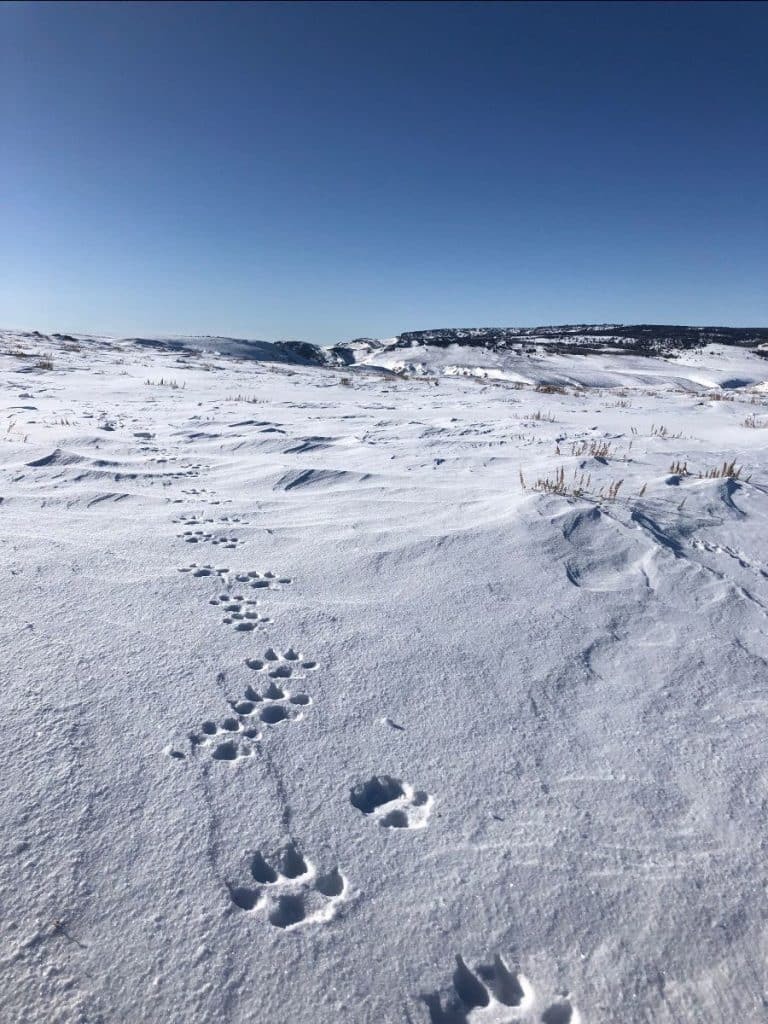
Wyoming’s insistence on an unregulated predator zone prompted litigation that slowed the state from gaining jurisdiction over its own wolves. But the controversial management approach prevailed, and it’s been blamed for Colorado’s lack of a functional wolf population nearly three decades after the native canines were reintroduced to Yellowstone National Park.
After killing the first wolf in May 2019, the outfitter and two of his sons made a concerted effort to pursue wolves north of the state line for the remainder of the year. Five more times that year, he said, they ran electronic predator calls in the area, drawing in mountain lions, bobcats, coyotes and other species — but no more wolves, he said.
The outfitter, who’s opposed to wolf reintroduction, did not put some special emphasis on targeting the pack near the state line because of their historical significance to Colorado. Rather, his interest in wolf hunting the area was more pragmatic, he said.
“We’ve talked about getting a license up in the Yellowstone area and hunting them there,” the man told WyoFile. “When we found them close to home — because we don’t make a lot of money — it was a big deal to us to be able to hunt something like that without it costing a fortune.”
The following year the family kept on gunning for wolves. Again, the tactics they used for hunting black bears worked.
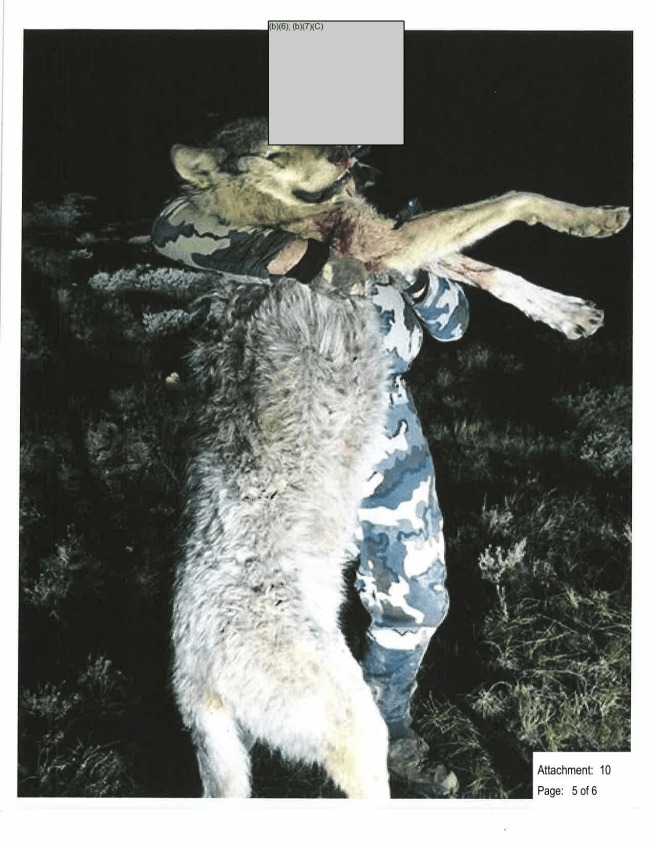
On May 5, 2020, the outfitter’s son was in “almost the exact same spot” where his dad killed a wolf the year before when he drew in a canine with audio of a distressed cow elk. This time, the wolf approached from behind and came within 75 yards. The son fired his 22 Creedmoor rifle, according to interviews conducted by agents investigating whether the reported Wyoming wolf killings hadn’t actually happened across the line in Colorado.
Two more wolves down
After a fatal shot rang out, the father and son — who were hunting together — heard howling off to the west. They decided to wait until the next day to pursue the others. The federal investigation describes what happened that next day, May 6, 2020.
The outfitter and his son had been trying to lure the wolves in with more electronic calling, but gave up. They were walking from Wyoming back to their side-by-side ATV, which was parked “several hundred yards” into Colorado. While passing through a gate marking the state line, they saw a wolf standing in the road about 200 yards behind them in Wyoming.
“The one f****** wolf was behind us, wondering what we were, walking up the road, so [I] turned around and dumped him,” one of the hunters told Fish and Wildlife Service special agents in a telephone interview.
The agents’ summary of their investigative interviews shows that the wolf kill wasn’t so straightforward. One of the men took an “offhand shot” — a term for a standing shot taken without additional stabilizing support — at the lone canine and missed. They followed, then took a second shot, with one hunter using the other’s shoulder as a gun rest. That second shot killed the wolf.
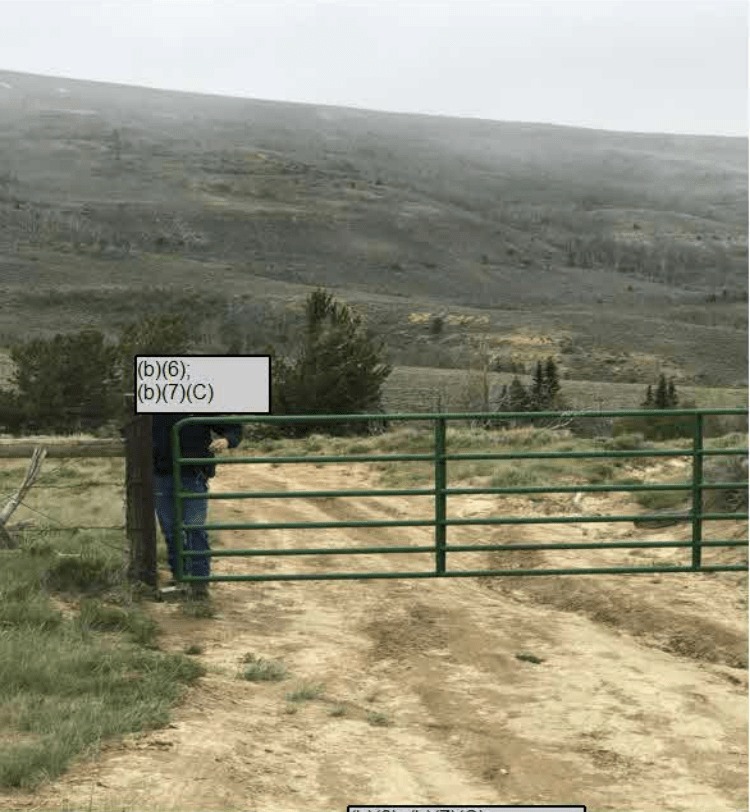
During the investigative interviews, a special agent asked one of the men, “How far on the north side of the gate (Wyoming side) were you?”
According to an interview summary, the man hesitated for “eight seconds.” Then he replied: “Umm … s***, I wish I could remember how far down that road.”
Right on the boundary
At another point in an interview, the agent asked one of the hunters if he was sure he was in Wyoming when he shot at the wolf. The man hesitated for “seven seconds,” then stated, “I’m pretty sure.”
During an interview about the third wolf shooting, near the gate on May 6, 2020, one of the hunters became “agitated and argumentative.” He told agents he didn’t expect to be grilled over something like shooting across state lines.
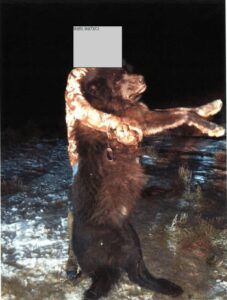
As the interview concluded, one of the men told an agent: “All I can say is, expect more wolves to die over there because [name redacted] hasn’t shot one and we are going back over there this winter. We are going on the Wyoming side.”
And they did.
“We actually had a couple other chances, and messed them up,” the outfitter told WyoFile. “They were too far away and wouldn’t come any closer.”
Redaction of the U.S. Fish and Wildlife Service’s investigation makes it unclear who killed a fourth wolf on April 11, 2020. That animal, a female, was killed slightly farther into Wyoming, roughly 1.5 miles from the state line, according to maps in the report.
The outfitter who spoke to WyoFile said he was aware of the fourth wolf’s demise.
“It was in some cattle,” he said.
Federal investigators also received a report on June 11, 2020 of two additional wolves killed in Colorado, allegedly “shot in the guts” near Browns Park National Wildlife Refuge. That September, they acted on a search warrant of a Moffat County residence, but didn’t find any wolf-related items. An interview at the time failed to turn up any new information about the alleged Colorado wolf shootings, documents show.
Law enforcement investigators also did not find any evidence of illegal activity related to the outfitter or his son hunting the three wolves near the border in 2019 and 2020.
Cleared of poaching
On June 30, 2020, a Colorado Parks and Wildlife officer and two federal special agents visited all three wolf kill sites in Wyoming. They confirmed their positions, and the reported kill sites, by matching trees with trees they could see in the background of photos one of the wolf hunters posted on Facebook.
The investigation began on a Colorado biologist’s suspicion that one of the wolves reportedly killed in Wyoming had actually been killed south of the state line. When the biologist inquired with the Wyoming Game and Fish Department, the agency “refused to share” wolf harvest information.
Once the U.S. Fish and Wildlife Service got involved, Wyoming did turn over wolf harvest records for four animals killed near the state line. Although there are few rules and licenses aren’t necessary, wolves killed in the predator zone must be reported within 10 days. The outfitter and his son both reported their kills within three days or less.
Game and Fish also obtained DNA samples from the animals, according to large carnivore supervisor Dan Thompson. The samples, however, were not analyzed in a way that provides any insight as to where the short-lived wolf pack in northwest Colorado and southwest Wyoming originated, he said.
The outfitter told WyoFile that a special agent told him the investigation wasn’t going anywhere early on in 2020.
“He called me like a week later and said, ‘You’ve been cleared of everything,’” the man told WyoFile. “He said, ‘Don’t worry about it.’”
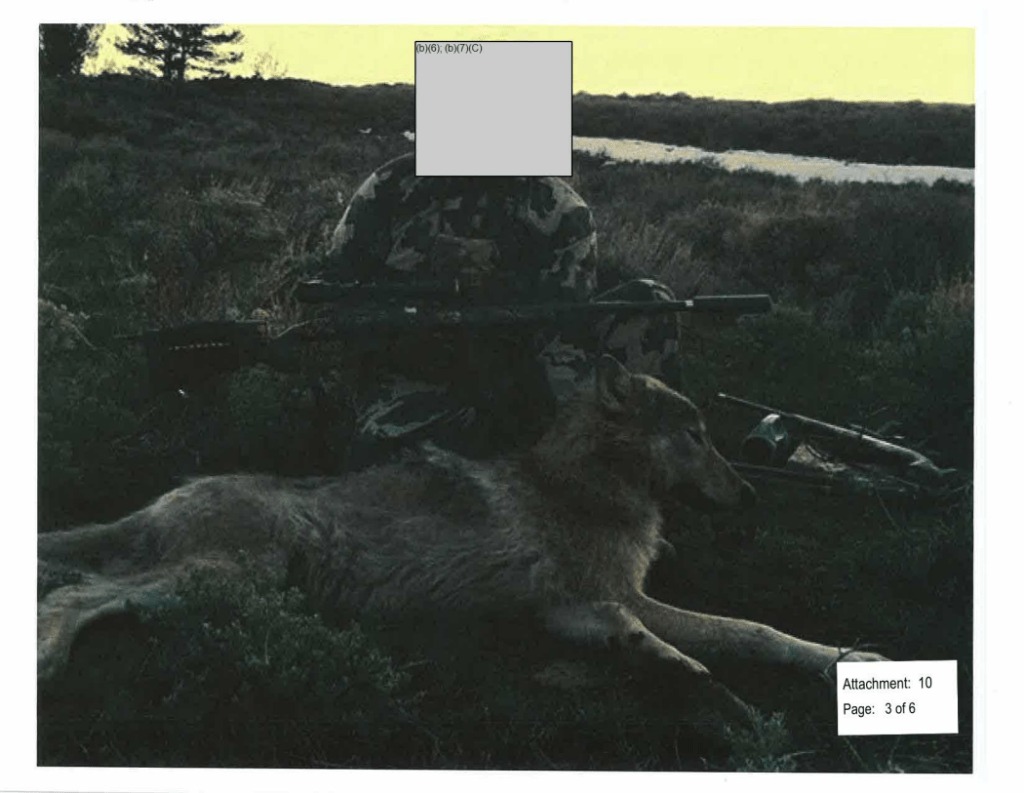
The U.S. Fish and Wildlife Service, however, didn’t formally close the investigation until February 2023, which explains why the documents haven’t been made available through the Freedom of Information Act until recently.
The public and media were left to speculate about what exactly happened.
The Denver Post reported on the rumored incidents in September 2020, but at the time Colorado Parks and Wildlife officials drew no connection between the deaths and the pack verified in Moffat County earlier in the year. By September 2021, Colorado Public Radio reported there was probably only one wolf remaining in far northwest Colorado.
What became of the three historic wolves shot down less than a half-mile from the state line?
The outfitter told WyoFile that they were skinned and their hides were tanned. He’s held onto the trophies even though, having been killed in the spring, their thick winter coats were “slipping.”
They hang in the corner of one of his sons’ old bedrooms, used now only for storage.
WyoFile is an independent nonprofit news organization focused on Wyoming people, places and policy.








